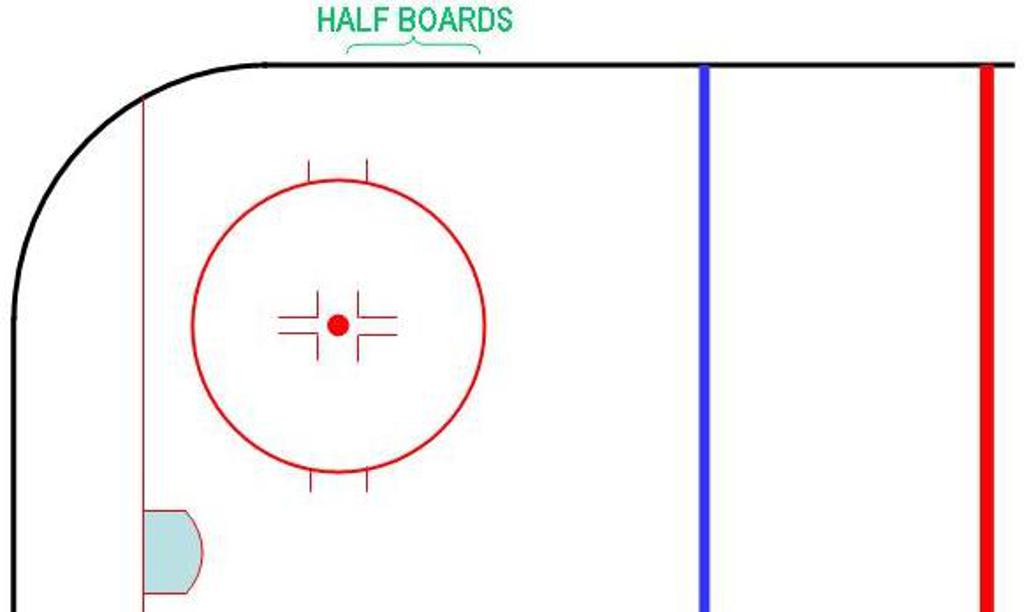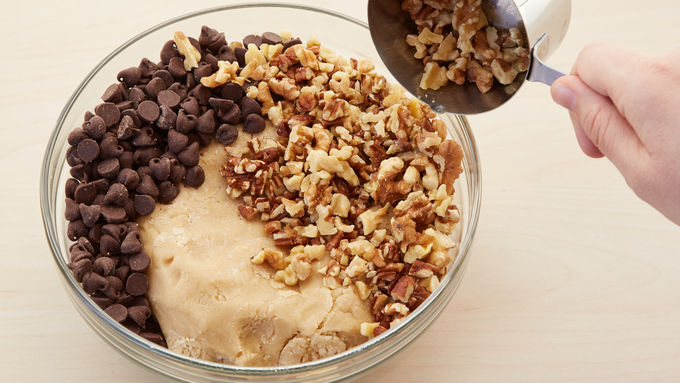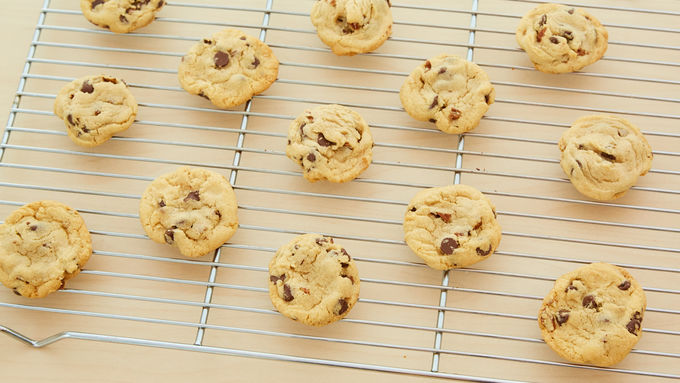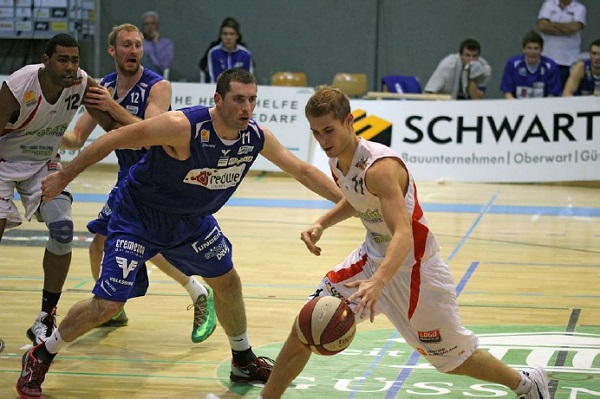Cách chọn giày đi bộ tốt nhất không đau chân. Khi chọn giày thể thao, bạn thường chú ý đến kiểu dáng và màu sắc bắt mắt mà quên mất tìm hiểu thời gian bạn cần phải thay thế chúng cũng như cách lựa chọn chúng như thế nào là tốt nhất?
Cách Chọn Giày Leo Núi Và Đi Bộ –
Đôi chân của bạn luôn cần giày bảo vệ trong những cuộc di chuyển đường dài. Vậy làm sao để chọn một đôi giày vừa phù hợp với sở thích, vừa bảo vệ sức khỏe và đôi chân của bạn? Mà lại đảm bảo các tiêu chuẩn chất lượng cơ bản mà giá thành vẫn phải chăng và tính ứng dụng cao? Để làm được điều này, bạn cần có những kiến thức cơ bản về cấu tạo, cấu trúc và chức năng của từng loại giày để so sánh và cân nhắc khi chọn giày.

Chú ý đến trọng lượng là cách bạn chọn giày leo núi và đi bộ. Ảnh: internet
Trọng lượng của giày
Khi chọn mua giày, bạn nên để ý đến trọng lượng của giày. Bởi một đôi giày quá nặng sẽ làm bạn rất mệt khi di chuyển. Nên chọn loại giày có trọng lượng càng nhẹ càng tốt. Nó giúp chân bạn di chuyển nhẹ nhàng, linh hoạt hơn. Nhiều nghiên cứu cho thấy rằng, giày chỉ nặng thêm 1g thì tương đương với cảm giác ba lô nặng thêm 5g.
Khả năng chống nước của giày
Độ ẩm là một trong những kẻ thù của giày. Độ ẩm cao làm rộp da chân do tăng ma sát với thành giày. Bởi vậy, bạn hãy luôn chú ý giữ cho giày của mình khô ráo, thông thoáng. Giày cần được làm từ các vật liệu thông thoáng giúp hơi ẩm dễ dàng thoát ra từ mặt trong của giày. Tuy nhiên cũng cần phải chống được nước từ ngoài ngấm vào.
Độ cứng thành giày
Giày phải đảm bảo đủ độ cứng để bảo vệ chân và mắt cá chân khi tiếp xúc với những bề mặt không bằng phẳng. Các loại giày với thiết kế cao cổ sẽ giúp bảo vệ mắt cá chân của bạn tốt hơn.
Độ cứng theo chiều dọc
Giày phải đủ độ cứng để đế không bị cong khi bạn nhấn mạnh vào phần ngón chân hoặc gót chân, đồng thời cũng phải đảm bảo độ mềm mại, đủ để bám tốt khi đi bộ.
Độ ôm của giày
Giày phải ôm vừa vặn với bàn chân sao cho chân không bị bè ra khi phải mang vác nặng. Nếu cần thiết, bạn có thể thêm một miếng đệm dọc theo lòng bàn chân để tăng độ ôm cho giày. Điều này giúp bạn thoải mái khi di chuyển.

Bạn nên nghiên cứu kỹ cấu trúc và các chức năng của giầy trước khi mua. Ảnh: internet
Phần mũ giày
Mũ giày là phần tiếp giáp mũi giày, tiếp giáp với lưỡi gà của giày và trải dài sang hai bên má giày. Mũ giày phải bảo vệ được chân và hấp thụ các lực tác động lên mũ giày ngoài ý muốn để bảo vệ được chân. Ngoài ra, mũ giày cũng phải thông thoáng và chống được nước.
Đế giày
Đế giày là phần dưới của giày, tiếp xúc trực tiếp với các bề mặt địa hình. Khi chọn mua giày, bạn cần phải quan sát kĩ đế giày để chọn lựa cho mình đôi giày phù hợp với chuyến đi. Phần lớn đế giày làm từ cao su để tăng ma sát và giảm thiểu sự mài mòn. Để tạo ra ma sát, người ta thiết kế đế giày với các rãnh sâu và gai nhọn, điều này làm tăng độ bám lên các bề mặt. Ở bề mặt trơn trượt, càng nhiều gai cao su càng tăng lực ma sát vào bề mặt giúp bạn tránh được trơn trượt. Ở bề mặt mềm, những mấu cao su sẽ ấn sâu xuống làm giúp giày bám tốt hơn. Đế giày cũng phải hấp thu và phân tán những chấn động khác để không bị ảnh hưởng tới bàn chân. Đế giày phải đủ cứng nhưng cũng phải đủ mềm để đi được tự nhiên. Nó cũng phải được gắn hoặc khâu chặt chẽ với mũ giày để chống nước tốt. Có rất nhiều kiểu phân bố gai cao su ở đế giày. Vì thế hãy tìm hiểu kĩ thông tin chuyến đi để chọn mua đôi giày phù hợp nhất.
Lưỡi giày

Lưỡi giày là phần đánh dấu khung đỏ trong hình. Ảnh: internet
Lưỡi giày là phần tính từ phần tiếp giáp với mũ giày. Lưỡi giày được đính với mũi giày và hai bên thành má giày. Lưỡi giày ôm sát giúp bảo vệ mu bàn chân của bạn, phần này có thể co giãn giúp giày ôm sát chân bạn hơn. Nhiều loại giày đi bộ sử dụng một miếng đệm giữa phần mũ giày và lưỡi giày. Trong trường hợp này, miếng đệm phải đảm bảo liên kết tốt với lưỡi giày để tránh cho cát, sỏi, bụi, nước có thể xâm nhập vào bên trong giày. Khi buộc dây giày, bạn nên chú ý để không tạo các điểm ép làm đau chân. Lưỡi giày phải làm từ các vật liệu thông thoáng nhưng đồng thời cũng phải chống được nước. Phần may hoặc dán phải đảm bảo kín để giữ nhiệt và chống nước.
Cổ giày/ Miếng đệm vòng quanh cổ chân
Cổ giày là phần ôm sát cổ chân của bạn. Thông thường, các loại giày đi bộ thường trang bị thêm một miếng đệm vòng quanh cổ chân để chân thoải mái hơn khi tiếp xúc với cổ giày. Phần đệm này thường được làm từ vải sợi tổng hợp hoặc mút giữ nhiệt. Ở các loại giày cao cổ, ở chỗ mà cổ chân tiếp xúc trực tiếp với giày cũng được đệm lót để tránh gây tổn thương cho da và giúp bạn thoải mái hơn khi di chuyển.
Lót giày
Lót giày nằm ở phía bên trong giày. Lót giày rất quan trọng, nó giúp bảo vệ lòng bàn chân của bạn không bị tổn thương khi tiếp xúc với đế giày. Ngoài ra, lót giày còn giúp giữ thăng bằng. Nên chọn loại lót giày làm từ chất liệu hút ẩm tốt, không gây mùi và đặc biệt phải phù hợp với kích cỡ bàn chân của bạn.
Gót giày
Gót giày là mặt sau của giày giúp bảo vệ mắt cá chân và phần gân ở phía sau cổ chân của bạn. Gót giày phải đủ cứng để để hỗ trợ cho chân bạn, đồng thời, phần trong của gót giày cũng phải được bọc lót cẩn thận để giảm tổn thương đối với da.
Mũi giày
Mũi giày là phần mà mũ giày tiếp xúc với đế giày. Mũ giày có tác dụng bảo vệ các ngón chân của bạn. Khi chọn mua giày, bạn cũng nên để ý đến độ cong của mũi giày,độ cong của mũi giày quyết định rất lớn đến nhịp bước chân trong khi di chuyển.
bí Quyết Chọn Giày Leo Núi Và Đi Bộ
Người thường xuyên sử dụng giày để đi bộ, chạy, leo núi… phân loại theo sắp xếp từ giày nhẹ tới nặng. Hiểu biết về các loại sẽ giúp bạn lựa chọn đúng đắn cho đôi giày của mình.
Chọn theo mục đích sử dụng
Giày đi trên đường mòn: Thật ra đây là loại giày chạy nhưng có thêm một số tính năng phù hợp hơn với đường mòn và đường mấp mô. Nó có nhiều miếng đệm ở chỗ ngón chân hơn và có đế bền dẻo hơn để phù hợp với điều kiện sử dụng khó khăn hơn.
Giày đi bộ: Loại này đã bắt đầu được xếp vào nhóm giày đi bộ chuyên dùng nhưng chỉ sử dụng ở các con đường đi bộ được làm sẵn hoặc không quá khó khăn và thường là đi trong ngày. Chất liệu bằng da lộn, da đanh mặt, nylon, vải nhẹ. Nó mềm và dễ uốn. Nhiều thiết kế giày này có những đai chịu lực để bảo vệ chân và mắt cá nhưng không cao hơn mắt cá chân. Một số loại cao cấp còn thiết kế lưỡi giầy chống nước và sỏi đá rơi vào trong giầy. Tuy nhiên, nhiều đôi giày thời trang thiết kế có hình dạng bên ngoài giống loại giày này nhưng không có những tính năng cần thiết cho việc đi bộ, do vậy bạn cần lưu ý kiểm tra kỹ.
Giày đi bộ đường dài: Cũng giống loại giày đi bộ loại thông thường trên nhưng sử dụng cho những địa hình khó khăn hơn. Loại này sử dụng trong các cuộc đi bộ dài ngày. Nó làm từ vật liệu da lộn và các vật liệu chắc chắn khác. Đế giày thường cứng hơn để bảo vệ chân. Cổ giày cao hơn mắt cá nên có thể bạn sẽ cảm thấy không thoải mái nhưng nó bảo vệ chân rất tốt.
Giày đi rừng/giày bảo hộ: Loại giày này để dụng trong những địa hình khó khăn. Nó có nhưng thiết kế bảo vệ chân như gia cố phần mũi giày, đế giày rộng và chắc, những đường gờ chịu lực. Mặt trong của giầy thường bằng những vật liệu đặc biệt để giữ thông thoáng. Loại giày này phù hợp với leo núi vì được thiết kế để chịu lực tốt, phân tán lực khi có va chạm nhưng vẫn thông thoáng và chịu nước. Đôi khi còn có những đinh sắt gia cố. Giày này thường cứng và nặng hơn.
Giày leo núi: Loại giày này được thiết kế đặc biệt giúp bạn chinh phục những vùng núi tuyết băng giá. Nó có những thiết kế với các đinh ở đầu mũi giày. Có khi giày này có những vòng nhựa quanh mắt cá để bảo vệ giống như giày trượt tuyết,bên trong được làm từ các chất liệu giữ ấm cực tốt. Tuy nhiên, không khuyến khích bạn chọn loại giày này nếu bạn phải đi bộ dài ngày.

Để chọn được giày phù hợp với đôi chân của bạn rất đơn giản, nếu bạn tìm hiểu đủ thông tin. Ảnh: internet
Quan sát giày trước khi chọn
Hãy quan sát kỹ để nhận thấy giầy không bị rách, trầy xước, keo lem nhem. Bằng cách bóp nhẹ vào thân giầy để cảm nhận độ cứng vừa đủ. Một đôi giầy đẹp cũng có nhiều tiêu chuẩn ngoại quan. Bạn nên chú ý đến thương hiệu và logo của hãng sản xuất để tránh mua phải giày kém chất lượng.
Quan sát đôi giầy bằng cách đặt chiếc giầy lên một mặt phẳng, xem chiếc giầy có cân đối không. Giầy không bị nghiêng vẹo, các tâm của đầu mũi giầy và đầu gót giầy đều phải thẳng. Chạm nhẹ vào đỉnh của mũi hoặc gót giầy không bị bập bênh.
Trước khi thử, bạn nhớ kiểm tra gót giầy xem có bị cộm, gồ ghề do các vật liệu nhỏ còn sót lại không, đưa tay vào lòng giầy để chắc chắn miếng lót không bị quấn hoặc keo dán chảy ra lòng giầy. Điều này sẽ giúp bạn tránh phồng rộp hoặc chai cứng bàn chân sau thời gian dài sử dụng.
Thử giày
Đưa chân vào giày mở không buộc dây. Đứng thẳng và nhấn mạnh chân vào phía mũi giày, khi đó, bạn phải cảm thấy chân của bạn phải trượt vào trong một cách dễ dàng và có thể đút được ngón tay trỏ vào giữa gót giày và gót chân bạn.
Ngồi xuống và buộc hai dây lại. Khi bạn buộc giày, bàn chân bạn sẽ trượt trở lại đằng sau, lấp vào khoảng không mà ngón tay trỏ đã tạo ra.
Đứng dậy và đi vòng quanh. Ngón chân bạn không được chạm vào mặt trong của mũi giày và cọ vào mặt trên bên trong của mũi giày. Nếu bị vậy, cần mua đôi giày rộng hơn một chút ở phần trước của giày.
Khi bạn đi bộ, gót chân và gót giày phải chuyển động nhịp nhàng với nhau. Gót chân không được trượt lên trượt xuống so với gót giày.
Câu “giày thừa dép thiếu” là không phù hợp với giày đi bộ. Nếu giày rộng, khi bạn đi bộ sẽ có khoảng cách giữa chân và giày và sẽ rất mất sức hoặc bị cọ sát trầy da. Ngoài hình dáng bắt mắt, bạn phải chọn giầy đúng kích cỡ. Tuyệt đối không chọn giầy nhỏ hơn chân dù bạn rất thích mẫu giầy đó.
Bạn nên đi mua giày vào buổi chiều để bảo đảm giày không bị chật. Nếu bạn không ngọ nguậy được các ngón chân tức là giày quá chật. Giày chật hoặc quá hẹp ở mũi sẽ làm tăng khả năng viêm kẽ ngón chân và lâu ngày sẽ làm ngón chân bị biến dạng chút ít.
Nên thử cả hai chân. Thường chúng ta có một chân này “nhỉnh hơn” chân kia một chút. Khi thử giày, nên đi kèm loại tất mà bạn thường mang với giày.
Cách lựa chọn giày thể thao phù hợp
Những nguy hiểm khi chọn giày thể thao chưa phù hợp
Bất cứ teen khi thường xuyên chơi thể thao đều phải đối mặt với những rủi ro nơi bàn chân, mắt cá chân và các vết thương khác. Nhưng thực tế khi tham gia các hoạt động thể thao, bạn có thể giảm thiểu những chấn thương này nếu mang giày phù hợp và hoạt động đúng.

Cách chọn giày thể thao theo cảm tính riêng là hoàn toàn sai. Hãy chắc chắn rằng, bàn chân của bạn được nằm gọn một cách thoải mái nhất trong giày. Giày phải phù hợp với hình dạng bàn chân bạn không quá rộng cũng không quá chật chội. Nếu quá bó buộc chân phải phù hợp với giày có thể dẫn tới những nguy hiểm sau:
* Vết bỏng giộp, phồng da
* Chân bị chai, sần
* Nốt viêm tấy ở kẽ ngón chân cái
* Cục chai ở chân
* Ngón chân khoằm xuống
* Sự biến dạng chân
* Gây ra những vết thương nơi bàn chân, mắt cánhân vàcác vết thương nghiêm trọng khác.

Nếu bạn tham gia vào một môn thể thao hoặc luyện tập 3 lần/ tuần thì giày thể thao là người bạn đồng hành tốt nhất. Giày thể thao đã được thiết kế dành riêng cho các hoạt động cụ thể phù hợp với tính chất của bộ môn thể thao và trọng lượng cơ thể. Thiết kế này nhằm bảo vệ các khu vực của bàn chân khi phải đối mặt với những căng thẳng lúc luyện tập.
Cách lựa chọn giày thể thao?
* Thử cả hai bàn chân khi đo giày. Vì bàn chân có thể tăng/ giảm kích cỡ hơn so với đôi giày cũ đã mua của bạn.
* Thử giày ở bàn chân lớn nhất của bạn. Hầu hết mọi người đều có một bàn chân lớn hơn chân kia.
* Mang giày cùng với loại tất và quần áo thể thao bạn sẽ mặc cùng.
* Lung lay ngón chân của bạn. Nếu bạn có thể tự do lung lay tất cả những ngón chân trong một không gian nhỏ hẹp thì tức là giày đó phù hợp với bạn.

* Chú ý kích cỡ và phong cách mỗi loại giày thể thao thường khác nhau do sự khác biệt giữa các thương hiệu giày.
* Đảm bảo rằng bạn cảm thấy rất thoải mái khi thử giày.
* Nếu có thể hãy mang giày đi bộ một đoạn hoặc chạy một khoảng cách ngắn để đảm bảo bạn hoàn toàn tin tưởng vào sự thoải mái của giày.
* Cảm thấy gót chân của bạn thật vững chắc.
Thời gian tốt nhất bạn nên thay thế một đôi giày thể thao?
Thời gian để thay thế một đôi giày thể thao phụ thuộc vào số lượng sử dụng, dấu hiệu của giày và tuổi của giày. Giày thể thao nói chung nên được thay thế khi:

* Bạn đã sử dụng giày được 300-500 dặm chạy
* Bạn đã có 300 giờ tích cực hoạt động cùng với giày
* Bạn đã sử dụng giày với 45-60 giờ bóng rổ, aerobic dance hay quần vợt
Chú ý:
Ngay cả khi giày thể thao chưa được bạn sử dụng nhiều nhưng vẫn có thể cần phải thay thế một đôi giày mới. Vì môi trường bên ngoài có thể làm cho chúng hoạt động kém hơn.

Trước khi bạn mua một đôi giày thể thao mới, hãy xem lại những đôi giày cũ của bạn xem chúng đã mòn như nào. Từ đó bạn có thể muốn tìm kiếm một ưu điểm mới với sự ổn định hơn hoặc hỗ trợ tốt hơn cho loại hình thể thao của bạn ở đôi giày sắp mua














 There are 9 faceoff spots on a hockey rink. Most faceoffs take place at these spots. There are two spots in each end zone, two at each end of the neutral zone, and one in the center of the rink.
There are 9 faceoff spots on a hockey rink. Most faceoffs take place at these spots. There are two spots in each end zone, two at each end of the neutral zone, and one in the center of the rink. In front of each goal, there is a goal crease, which is surrounded by thin red lines and filled in with light blue. The crease is a special area of the ice designed to allow the goaltender to perform his or her duties without interference. In most leagues, no attacking player may enter the goal crease with a stick, skate, or any body part before the puck. For the purposes of this rule, the crease extends vertically from the painted lines to the top of the goal frame. This rule was eliminated from the National Hockey League and other North American professional leagues beginning in the 1999-2000 season.
In front of each goal, there is a goal crease, which is surrounded by thin red lines and filled in with light blue. The crease is a special area of the ice designed to allow the goaltender to perform his or her duties without interference. In most leagues, no attacking player may enter the goal crease with a stick, skate, or any body part before the puck. For the purposes of this rule, the crease extends vertically from the painted lines to the top of the goal frame. This rule was eliminated from the National Hockey League and other North American professional leagues beginning in the 1999-2000 season. The blue lines divide the rink into three zones. The central zone is called the neutral zone or simply center ice. The generic term for the outer zones is end zones, but they are more commonly referred to by terms relative to each team. The end zone in which a team is trying to score is called the attacking zone or offensive zone; the end zone in which the team’s own goal net is located is called the defending zone or defensive zone.
The blue lines divide the rink into three zones. The central zone is called the neutral zone or simply center ice. The generic term for the outer zones is end zones, but they are more commonly referred to by terms relative to each team. The end zone in which a team is trying to score is called the attacking zone or offensive zone; the end zone in which the team’s own goal net is located is called the defending zone or defensive zone.



















